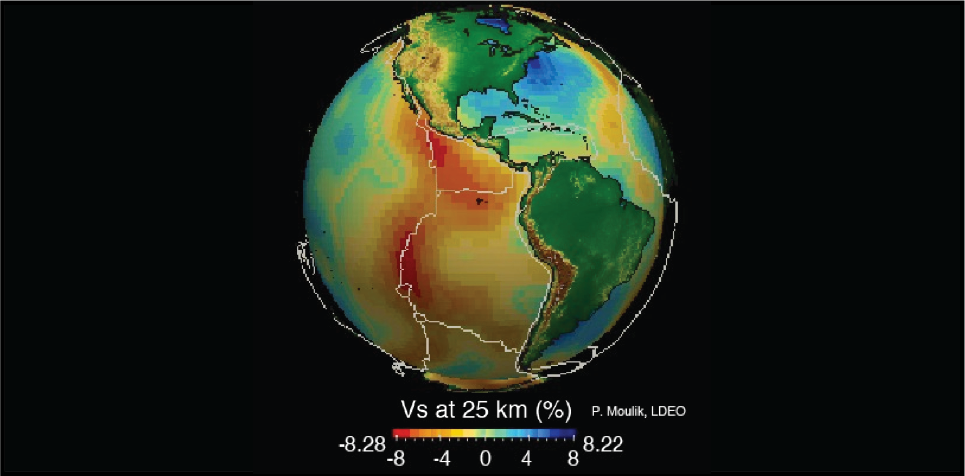Radial Anisotropy: Flow in the mantle
S362ANI+M
An anisotropic shear velocity model of the Earth’s mantle using normal modes, body waves, surface waves and long-period waveforms
What is the nature of flow in the mantle?
How fast do waves travel anywhere on Earth?
Where can radial anisotropy be robustly detected?
Can we reconcile a broad spectrum of seismic data? What are the benefits?
We use normal-mode splitting functions in addition to surface-wave phase anomalies, body-wave travel times and long-period waveforms to construct a three-dimensional model of anisotropic shear-wave velocity in the Earth's mantle. This is the first tomographic study to exploit the sensitivity of mode-splitting data to constrain radial anisotropy in the Earth's mantle jointly with several other types of data. Our modeling approach inverts for mantle velocity and anisotropy as well as transition-zone discontinuity topographies, and incorporates new crustal corrections for the splitting functions that are consistent with the nonlinear corrections we employ for the waveforms. Our preferred anisotropic model, S362ANI+M, is an update to the earlier model S362ANI, which did not include normal-mode splitting functions in its derivation.
Summary:
[I] We develop a new method to invert jointly four distinct types of
seismic data for anisotropic shear velocities and discontinuity topographies in the
Earth's mantle while accounting accurately for the crustal structure.
[II] We show
that the mode-splitting data require strong isotropic vS heterogeneity in the
transition zone and changes to the southern hemisphere in the mid to lower mantle.
[III] We report the improved consistency between recent studies on the long-wavelength
isotropic structure, especially in the transition zone and the lower mantle.
[IV] We show that the datasets used in this study, especially the mode-splitting data,
do not require radial anisotropy in the deep mantle.
[V] We demonstrate that the
mode-splitting data suppress spurious anisotropic anomalies in the mid mantle and
reduce even-degree tradeoffs between anisotropic and isotropic variations in the lowermost mantle.
Reference:
Please cite the following work if you use this data or software.
[A] Moulik, P. & Ekström, G., 2014. An anisotropic shear velocity model of the Earth's mantle using normal modes, body waves, surface waves and long-period waveforms, Geophys. J. Int., 199(3), 1713-1738, doi: 10.1093/gji/ggu356. pdf
You can also cite the dataset and software from this Zenodo page (Optional).
[B] Moulik, P. & Ekström, G., 2014. Dataset and Software for An anisotropic shear velocity model of the Earth's mantle using normal modes, body waves, surface waves and long-period waveforms. In Geophys. J. Int. (v1.0, Vol. 199, pp. 1713–1738). Zenodo. doi: 10.5281/zenodo.8357379






